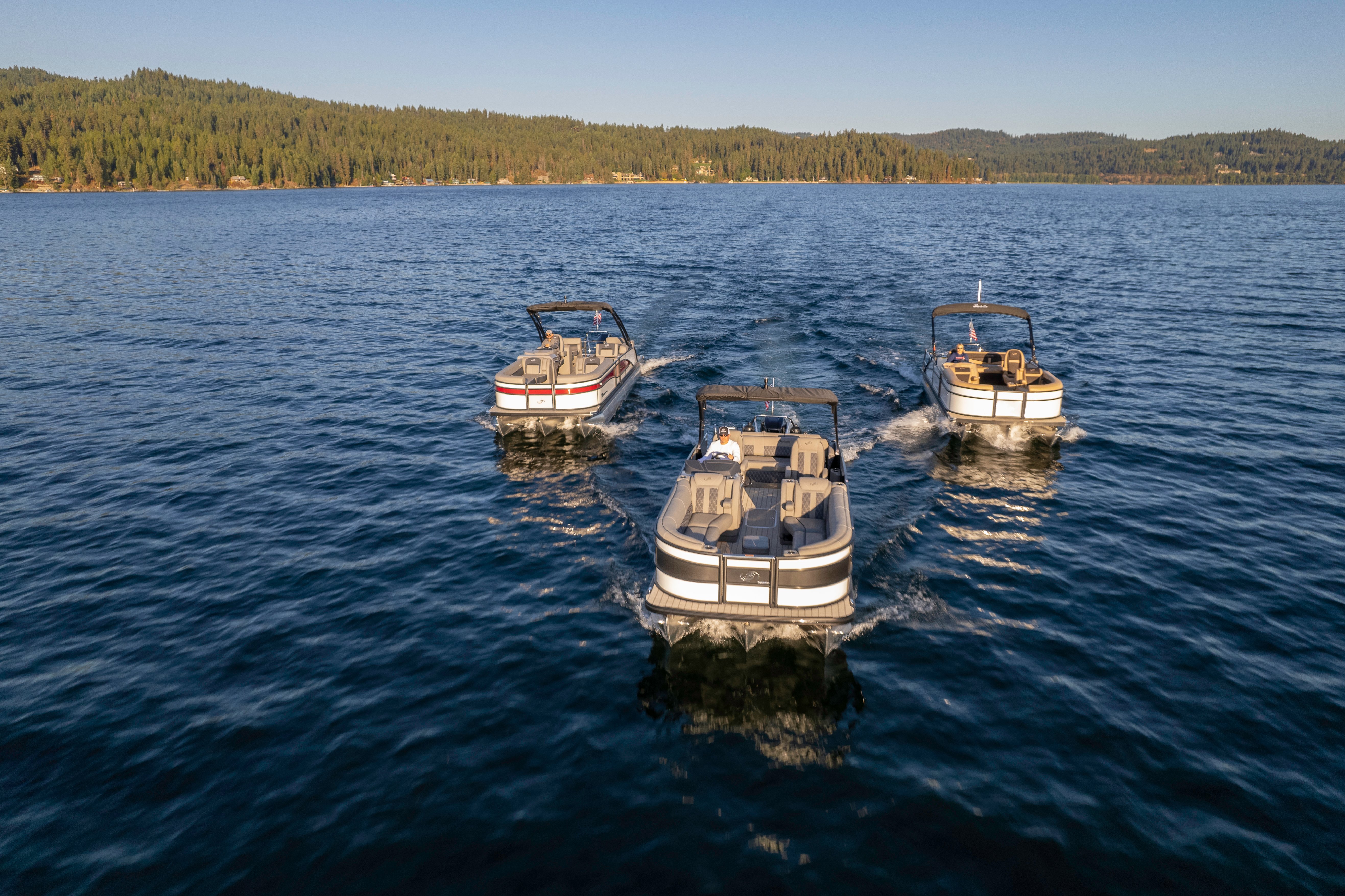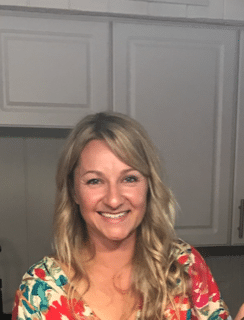How Barletta Pontoon Boats are Built (Step by Step)
If you’re in the market for a new pontoon and have stumbled upon Barletta, you may have noticed there’s something different about the way these pontoon boats are built.
Construction should be a make-or-break factor in your buying decision, but where do you start? As a long-time pontoon boat owner, my old bi-toon with a 150 horsepower engine would take a beating on my body of water.
Don’t get me wrong, I lived on that bi-toon every summer for years on the same lake I boat on today. Now, the difference is other boats like those that are built for wakesurfing, are heavier and more powerful than ever before.
This leads to lots of bigger, deeper waves that create choppy water. Since rough water makes for a bouncy ride, I know the importance of having a solid hull that can take the brunt of the waves without sacrificing a smooth, enjoyable ride.
The way my 25UC triple toon is built has me gliding on top of the water, taking the waves like a champ. I would have it no other way and everyone who joins us for a cruise would agree, it’s the smoothest pontoon experience they’ve ever had.
I’m going to give you a breakdown of what creates this impeccable ride by walking you through the steps of how a Barletta pontoon boat is made. There is a lot of thought and effort that goes into the craftsmanship of these boats so let’s start from the beginning.
The very first thing that happens once the boat enters production is that it’s assigned a HIN. All of the parts such as tubes, rails, and furniture are matched to the specific HIN. This keeps all of the components organized as the boat heads down the assembly line.
The HIN is established, the parts are assigned based on the order, and the boat starts coming to life from the ground up. First stop, toons.
Check out the Barletta Factory Tour video as Ryan walks us through how a Barletta is Made
1. Craft the Toons
Barletta builds every pontoon in-house. This process starts with rolling a sheet of metal into a tube-like shape. From there, robotic welders weld a seam to close off the metal and create a complete tube.
We use the same material throughout all lines that Barletta builds. Lusso and Corsa tubes are 26’’ in diameter and Cabrio’s tubes are 25’’ in diameter. No matter which boat you choose, the toons are built for strength.
The next step of the process includes reinforcing the toons. Multiple baffles are welded down the length of the toon. This not only reinforces the toon but it also chambers it off in sections.
Think of a pop can, you can squeeze the middle but it’s much harder to squeeze and crush the bottom because it’s reinforced. That’s the same idea for including baffles, they keep the tube strong so that it holds its shape.
The chambers created by the baffles are also a conscious effort to keep you safe on the water. On the off chance you hit bottom or a large rock punctures one of your toons, water will only accumulate in one part of the toon.
Seeing as the only way to sink a pontoon boat is to fill the toons completely, having chambers within the toons should ensure that the entire length of the tube will not get bogged down with water. The baffles alone contribute to a safe and smooth ride.
The next part of the toon that’s constructed is the nose cone. This is the point on the front of each tube. These are also built in-house at Barletta. The process begins much like the toon in that we take a flat piece of metal and roll it in a machine. We use thicker aluminum for the nose cones so that they’re strong when up against rough water.
Once it’s rolled, it’s welded together and we add a solid keel. The extra thick keel protects the nose cone as it takes the brunt force of the water as the boat is in motion. We then add metal reinforcements on the interior of the nose cone so that it holds up under pressure.
Now that all the pieces of the toon are created, they’re welded together to create one complete toon. Pressure testing comes next. There’s a Schrader valve on top of each chambered section that we use to fill the toon with air.
This process helps strengthen the toon. It also acts as a safety net to ensure that there are no holes in the seams. Once the toons are filled up, they’re ready for a frame.
2. Build the Frame
Now that the toons are built, it’s time to start constructing the frame. The frame sits on top of the toons and is crafted so that the ride you experience is smooth and quiet. A lot of thought went into the Barletta frame as it’s the foundation for the type of ride you get out of your pontoon boat.
To start, heavy-duty M brackets are welded down the length of the toons. These M brackets are unique in that they have extra-large feet that make them exceptionally stable. On top of those M brackets go our Vibration Isolation Pads or VIP Technology™.
These pads absorb vibrations and eliminate noise and any potential movement that would come from metal on metal clanking together while bouncing through the water. These pads play a big role in making the Barletta ride rattle-free.
Next, we set the beams on top of these pads. We use double I-beams along with other heavy-duty crossmembers to create a strong frame that the floor will sit on top of.
3. Set the Floor
A heavy-duty frame is just the beginning of the elevated craftsmanship that goes into each Barletta. The floor comes next which is made of 3/4’’ marine-grade plywood that is treated so it holds up to moisture.
A two-step process is used to adhere the plywood decking to the crossmembers. It’s screwed down into each crossmember as well as glued down so that it’s extra secure and locked to the frame. Lastly, vinyl weave flooring is laid onto the deck and cut to the shape of the boat. All Barlettas get this type of flooring as it holds up to the elements far better than carpet.
The boat starts coming to life once the deck is set and vinyl flooring is laid. The rails are the first step in the assembly of the boat, then it’s go time for adding all of the parts and pieces that make your boating experience comfortable.
4. Assemble the Boat
The first step in assembling each Barletta once the floor is completed is adding the rails. We bend every rail in-house and send it out to be anodized. Once it’s back at Barletta, it’s assigned to a HIN and ready for placement.
The rub rails are placed around the exterior of the frame. Next, the rails and side panels are set around the perimeter. The exception to this order is if the boat is an arch floorplan, then that will be added before the rails.
Now the frame is starting to take the shape of a pontoon boat and every stop down the line adds more and more components. The furniture is in place, the helm is set, electronics are connected, and so on.
The pontoon boat is ready for the final touches once it nears the end of the assembly line. Its next stop is exterior features.
5. Under the Deck
For added protection, the next stop is adding an underbelly. All triple-toon Barlettas get a full skin underbelly, bi-toon Barlettas have the option to include this feature. The underbelly is constructed with pieces of metal that are attached to the bottom of the frame.
This not only protects the deck of the pontoon but also contributes to the performance of the boat. It acts as a shield when waves crash into the hull helping to smooth the water as you cruise.
6. Hang the Engine
Nearly as important as assembling the boat is the engine hang stop on the production line. This is a tedious process that uses crane-like technology paired with manpower to lift the outboard engines off the ground and hang them from the aft deck.
We partner with two different engine manufacturers. Mercury outboards are ordered and hung 90-95% of the time. We also offer Yamaha outboards. You can have the engine drop-shipped to your dealer for them to hang on the boat. Most owners opt-in to have the engine hung at the factory so that the boat is water-ready when it gets to the dealership.
Once the motor is secured to the boat, most manufacturers would shrinkwrap it and send it out into the world to start its journey to the dealer who ordered it. Barletta does things a little differently in that the boat has one more stop before it hits the road.
7. Pre-Delivery Inspection
This is the final step in the build process and Barletta puts a ton of time, energy, and care into it. The pre-delivery inspection or PDI process is in place to check every boat that comes down the line for potential errors that may have occurred during the build; most manufacturers don’t take this extra step.
First, we photograph the boat from multiple different angles. These photos are immediately available to our dealers so that you can see exactly what the boat you purchased looks like.
Once the photos are taken, the inspection begins.
Trained inspectors go through six pages of over 200 checkpoints within the boat. They check everything from the toons up to make sure each component functions properly without flaws.
Any man-made product is bound to run into hiccups now and then, so this process helps to eliminate potential issues that may have snuck past the production crew. If the inspector sees something they don’t like, they pull the boat back to the line and it’s fixed before it leaves the factory.
The Pontoon Takes Off
Once the boat passes the PDI, it’s ready to make its way down the road. As an added layer of protection against the elements, each boat is shrink-wrapped so that dirt, grime, and anything else it encounters on its journey to the dealer doesn’t harm the precious cargo.
After the boat is shrink wrapped, it’s placed upon a trailer as it waits to be picked up by transporters. This process typically takes ballpark 7-10 days from factory to dealership, and possibly longer the further away you live.
The build process is something Barletta takes great pride in and continues to strive to be the greatest. The best way to feel the Barletta difference is by taking one out for a test drive. I can explain the smooth, quiet ride all day, but once you experience it for yourself, you’ll be hooked.
Other helpful articles:
What Happens After You Order a Barletta
When Will I Get the Pontoon Boat that I Ordered? (Lead Times Explained)
What to Expect from Your Boat Dealership’s Service Center



.png?width=700&name=BUILD%20(2).png)